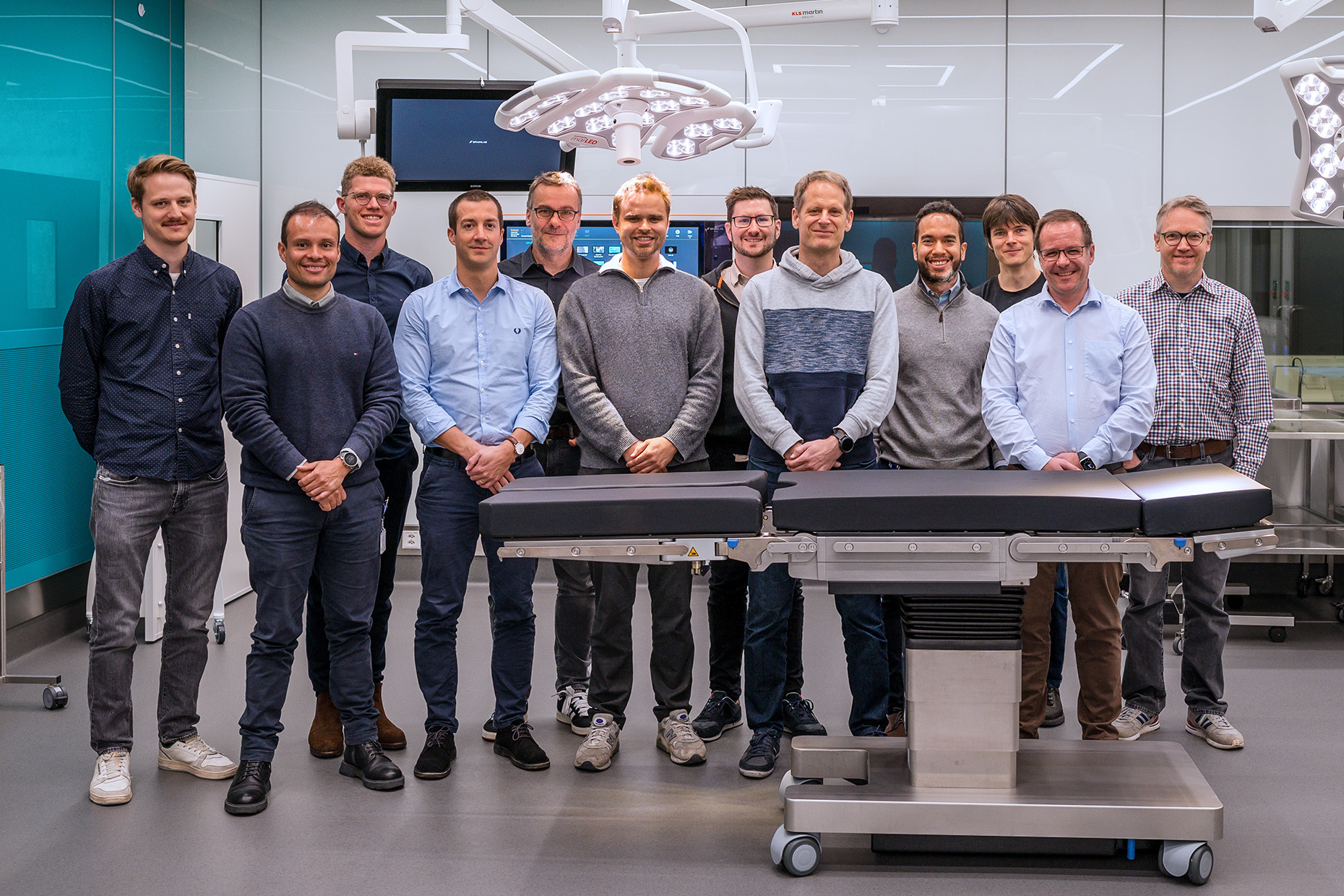Advancing Surgical Data Science: The OR-X Open Research Data Initiative
About this Project
The OR-X ORD project, launched in July 2024 with support from swissuniversities and the State Secretariat for Education, Research, and Innovation (SERI), aims to advance surgical data science and innovation in in-vivo treatment technologies.
Developed by researchers from the University of Zurich, ZHAW, Zühlke Group, and the Digital Medicine Unit at the University Hospital Balgrist, the project addresses critical challenges in intraoperative data collection caused by proprietary interfaces, workflow constraints, and regulatory barriers. Through the integration of specialized components within OR-X, a center for surgical training, education, and translational research, the project focuses on automating the collection, fusion, and structuring of multimodal surgical data.
Outcomes include a novel Data Collection Framework and a FAIR-compliant Surgical Data Cloud Platform, which will establish standardized surgical data models, foster Open Science collaboration, and contribute to initiatives like the Swiss Personalized Health Network.
Scientific Summary
Collecting high-quality intraoperative data is paramount for advancing surgical data science and innovating surgical technologies for the in-vivo treatment. This data also facilitates objective and evidence-based assessment of treatment quality, efficacy, or deficits across interventions and surgeons. However, data collection in real operating rooms face obstacles such as proprietary interfaces, workflow and regulatory constraint and safety concerns, impeding comprehensive intraoperative data acquisition.
The Operating Room-X (OR-X) stands as a distinctive research infrastructure implementing a perfect copy of a real operating room in which ex-vivo surgeries are efficiently conducted. Supported by a robust backbone network, the OR-X enables the seamless integration of Augmented Reality (AR), surgical robotics, and Artificial Intelligence (AI) technologies. This integration accelerates the implementation of novel surgical innovations and yields invaluable insights through continuous analysis of on-site experiments.
The overarching goal of the ORD project is to develop and seamlessly integrate ORD components into the OR-X, thereby facilitating the generation and publication of large-scale multi-modal surgical databases (digitalization of surgeries). The planned ORD components will include:
- the integration of all relevant surgical devices and technologies into the high-performance network of the OR-X,
- the automatic fusion and structuring of multimodal data to establish surgical data models and
- the efficient population of these data as public datasets.
As a primary outcome of the ORD project, a novel Data Collection Framework will be established, automating the collection, structuring, and standardization of surgical data. This framework aspires to set new benchmarks in surgical data science within the research community. Furthermore, a public Surgical Data Cloud Platform will be launched that is aligned with Open Science best practices including FAIR principles.
Results and Output
The OR-X ORD project will deliver key results that address the identified challenges and advance surgical data science. The primary outcome is the development and implementation of functional prototypes for the Data Hubs, Middleware, and Cloud Platform. These components will enable seamless multimodal data collection, integration, and dissemination within the OR-X infrastructure. The Data Hubs will provide versatile interfaces for synchronizing data from surgical devices and technologies, while the Middleware will support real-time streaming and fusion of collected data. The Cloud Platform will establish a secure, FAIR-compliant environment for storing, structuring, and sharing these datasets.
As part of the project, the first large-scale, high-quality multimodal surgical dataset will be published, showcasing the practical application and functionality of the ORD components. These datasets will serve as a benchmark for future research and support collaborative efforts across national and international networks. By the project’s conclusion, the ORD components will be fully operational, setting a foundation for ongoing advancements in surgical data science and contributing to the broader goals of Open Science and interdisciplinary research.
Impact on Open Science Practices
The OR-X ORD project significantly contributes to Open Science practices by ensuring that all generated surgical datasets adhere to FAIR principles—making them Findable, Accessible, Interoperable, and Reusable. By integrating these practices into the design of the Data Collection Framework and Surgical Data Cloud Platform, the project facilitates transparency, reproducibility, and collaborative research across disciplines. The datasets will be openly accessible, supporting interdisciplinary studies and enabling researchers, clinicians, and industry partners to innovate in surgical data science and technology. Furthermore, the project’s alignment with national initiatives, such as the Swiss Personalized Health Network and LOOP Zurich, enhances the interoperability and integration of surgical datasets into broader health data ecosystems, setting a precedent for similar efforts in other scientific domains.
